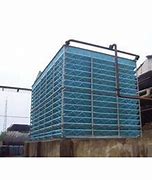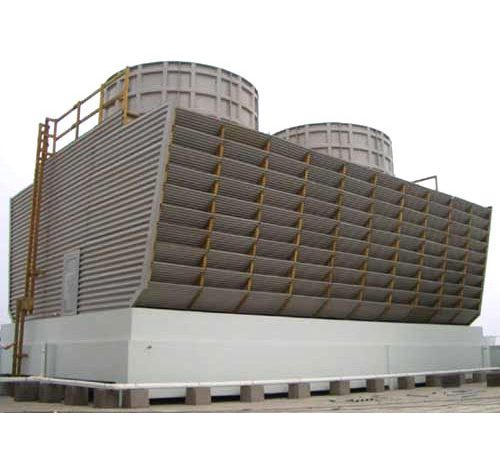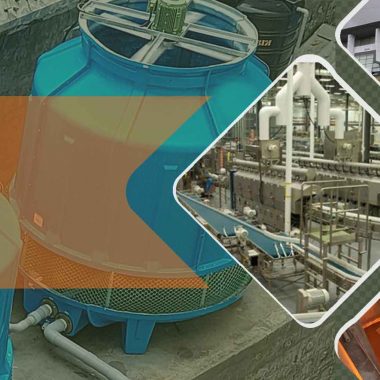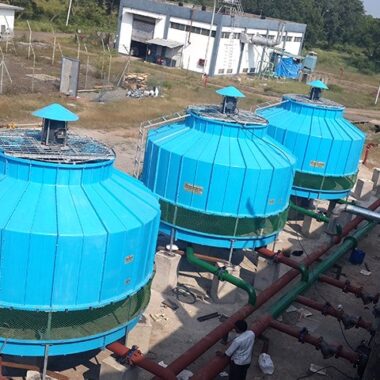Impact of weather conditions on Cooling tower efficiency
Impact of weather conditions on Cooling tower efficiency
Climate conditions have a critical affect on the productivity of cooling towers, influencing components such as warm exchange rates, water dissipation rates, fan execution, and by and large framework operation. Impact of weather conditions on Cooling tower efficiency, Here’s how diverse climate conditions can impact cooling tower productivity :
1) Temperature:
- Higher ambient temperatures result in expanded heat loads on cooling towers as the temperature differential between the warm prepare water and the cooler air decreases. This decreases the cooling capacity of the tower, requiring the system to work harder to realize the desired cooling effect.
- Conversely, lower ambient temperatures improve cooling tower productivity by expanding the temperature differential and improving heat transfer rates. Cooling towers operate more efficiently in cooler climate conditions, giving greater heat rejection capacity with less energy utilization.
2) Humidity:
- Humidity levels affect the evaporative cooling handle in cooling towers. In dry climates with low humidity, water evaporates more readily, upgrading the cooling impact and improving overall efficiency. However, excessive evaporation can lead to higher water utilization and expanded mineral buildup within the tower.
- In humid climates, where the air is as of now saturated with moisture, vanishing rates are lower, reducing the cooling potential of the tower. Cooling towers may struggle to realize the specified cooling impact in high-humidity conditions, requiring extra energy inputs to preserve efficiency.
3) Wind Speed and Direction:
- Wind speed and course influence wind current designs around cooling towers, influencing heat dissipation and fan execution. Higher wind speeds upgrade convective heat transfer by advancing more noteworthy discuss circulation through the tower, making strides cooling effectiveness.
- However, solid winds can moreover make wind current disruptions and turbulence, reducing fan efficiency and expanding energy utilization. Wind heading can affect the distribution of air and water inside the tower, influencing heat transfer rates and overall system execution.
4) Precipitation:
- Rainfall and precipitation can affect cooling tower operation by modifying water levels within the tower bowl, diluting water chemistry, and reducing vanishing rates. Heavy rainfall can lead to overflow or flooding in cooling tower bowls, influencing system execution and requiring extra water treatment.
- On the other hand, light rain or mist can enhance evaporative cooling and improve cooling tower productivity by increasing water evaporation rates and reducing water temperatures.
5) Seasonal Variations:
- Seasonal changes, such as temperature variances and daylight hours, affect cooling tower operation and efficiency.
- Cooling towers may experience higher cooling loads amid hot summer months and lower loads during cooler seasons, requiring alterations to fan speeds, water flow rates, and water treatment programs to maintain optimal performance.
- Also, seasonal maintenance tasks, such as winterization methods to prevent freezing, are necessary to ensure the solid operation of cooling towers year-round.
Overall, weather conditions play a basic part in deciding the productivity and execution of cooling towers. Operators must carefully monitor and adjust cooling tower operation in reaction to changing weather conditions to optimize productivity, minimize energy utilization, and maintain reliable cooling capacity.






Turnkey solutions for packaged Cooling Systems? - Cool Fab Equipments April 01, 2024 at 5:37 pm
[…] Turnkey solutions for bundled cooling systems refer to comprehensive offerings given by producers or benefit providers, which incorporate the plan, engineering, obtainment, development, establishment, commissioning, and support of cooling systems in a ready-to-use bundle. These arrangements point to supply customers with a hassle-free encounter by offering a complete bundle that meets their cooling needs. Turnkey solutions for packaged Cooling Systems?, Here’s an overview of what turnkey arrangements for packaged cooling systems typically incorporate: […]